|
Earn Money : $20.00 for registration and between $0.50 and $8.00 for every completed assignment !!! |
|
|
|
Europana:
Help us to maintain our site FREE, visiting, without commitment, to
our advertisers. Thanks for your support.
|
CANAIMA.
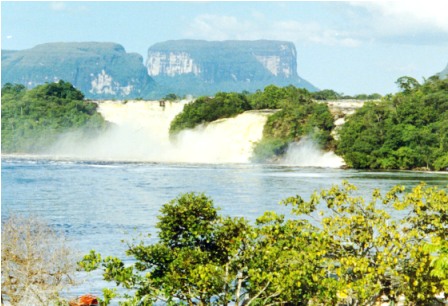 |
|
Laguna de Canaima (Gap of Canaima)
|
Location: Canaima, one of the largest national parks of the world, extends with 3.000.000 of hectares in the Region of Guayana, specifically in the Bolivar State of Venezuela - Southamerica. It contemplates among its diverse attractive the imposing Salto Angel, which is the highest waterfall of the world with 972 meters, aside from possessing other natural monuments.
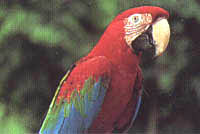 |
|
Guacamayo rojo (Ara chloroptera)
|
Height and Average Temperature: Canaima is located upon the oldest zone of the planet: the Macizo Guayanes, which is esteemed that arose in the Precambric, does some 2 million years. The heights of the National Park vary since 400 until 2763 meters upon the level of the sea. The temperature average varies since 10º C. to 22º C. The period of rains is since May until November, with a high precipitación of 3.000 mm annual.
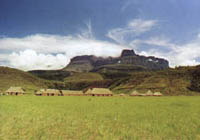 |
|
Campamento Kavak (Kavak Camp)
|
Tourist Attractive:
Tepuyes: Exist a total of 115 Tepuyes or "Cut Hills", are formations of vertical walls (with very steep profiles) that resemble gigantic tables of stone talladas by the erosion during thousands of years; and to the ones that some investigators and writers, they call "The Islands of the Time" or "Ecological Islands" due to their geological antiquity. Walls constituted by areniscas polícromas, cuarcitas that they raise themselves abruptly upon the horizon, arising among sabanas and forests. The tepuyes are ecosystems unique in the world.
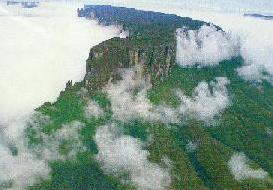 |
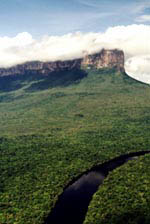 |
|
Aerial views of Tepuyes.
|
|
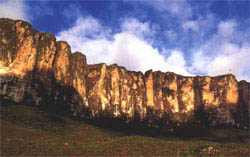 |
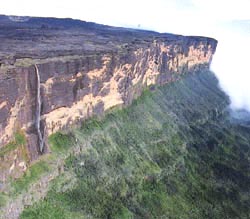 |
|
Roraima Tepuy.
|
Leap in Roraima
|
|
Auyantepui.
|
|
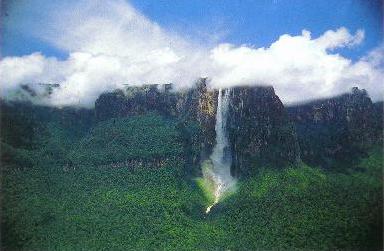 |
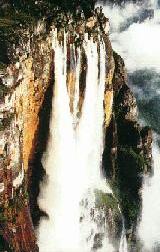 |
|
Salto Angel o Parecupá-vena o Kerepa-kupai-merú
|
|
Salto Angel: Situated in the river Churún, affluent of the Carrao, It is the interrupted waterfall highest of the world, fifteen greater times that the of the Niagara. Its fall is of 979 meters since the table of the Auyan Tepuy, in the forests of the macizo of the Guayanas. Went discovered in 1937 by the american aviator and adventurous James C. Angel, of whom receives the name. The Salto Angel be called by the native Kerepakupai-merú, that in the Pemon language means "leap of the deepest place", although be also known like Churún-merú, which is an error, since that name corresponds to another leap of the National Park.
Important: to arrive until the Salto Angel base, there are excursions that generally two last or three days, performed up the river through curiaras (rowboats) recubiertas currently with fiber of glass that offer smaller resistance to the water. The route to arrive is: Gap of Canaima. - Carrao River - Churún River- Cañon Churún - Salto Angel. Touristic plans in Canaima carry out these excursions by a price asequible, besides also can be visited in Helicopter.
Rivers: Caroní, Carrao, Aponwao, Kukenán, Churúm, Arabopo, Yuruaní, which they conform the main fountain of sweet water of the planet; leaps and waterfalls of impressive beauty, among them the already mentioned, Salto Angel or Parecupa-merú and the Kukenán-merú, that are the first and fourth highest waterfalls of the world, respectively. .
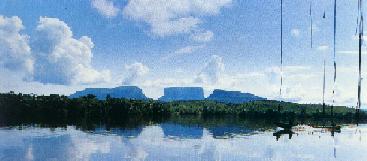 |
|
Río Carrao, Tepuyes y Lianas.
|
Other important leaps of the National Park: Other of the outstandingest characteristics of the National Park Canaima are its waterfalls, meru or vena. Besides the Salto Angel , can find: Churún-merú, Salto Hacha, Kamá-merú, Chinak-merú o Aponwao, Torón merú, Salto Kukenán, Salto El Danto, Salto Aripichí, Salto Eutobarima, Salto La Cortina, Aicha-merú, Ivarana-merú, Epopa, Techinen-merú, Yunwaru-merú, Salto El Sapo.
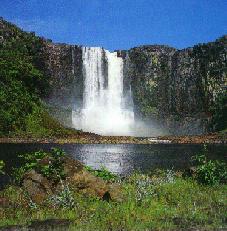 |
|
Aerial view of Salto Aponwao (Chinak-merú)
|
Flora: Characterized by forests of gallery, "sabanas with morichales" and vegetation of the tepuyes, with unique plants in the world, including the carnivorous plants that itself are nourished of insects to complement the scarce nutrients that the soils offer them, among them: Heliamphora nutans, Drosera roraimae, Utricularia quelchii. Other species that embellish these places are: Stegolepis guianensis, S. ptaritepuyensis y Bonnetia steyermarkii.
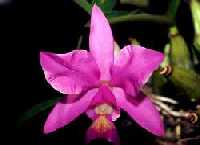 |
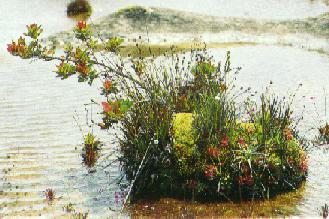 |
|
Orquídea
|
Vegetation of the Tepuyes.
|
Fauna: Of great diversity, including species in danger of extinction like the giant hormigero bear, the giant armadillo, the water dog, the jaguar or tiger, cunaguaro manigordo or ocelote, etc. Other mammals that inhabit the park are: the rabipelado ,the laziness of three fingers, the squirrel, picure, chiguire, the porcupine, the fox crab seller, comadreja, puma, báquiro, etc. Birds: the gallito of rocks, the bell founder, moriche, the violinero, cristofué, the king zamuro, sparrowhawks, guacamayas, etc. Reptiles: the iguana, morrocoy selvático, the chameleon, and serpents like: tragavenado, anaconda, chorale, mapanare, bell, etc.
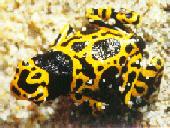 |
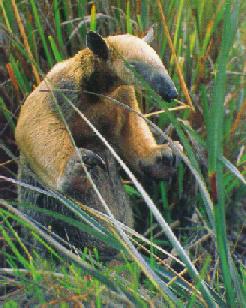 |
|
Sapito minero (Dendrobates leucomelas )
|
Oso melero (Tamandua tetradactyla)
|
Indigenous Commnunities: The indigenous communities to the Pemon ethnic group, that are the native inhabitants of this region, with already 11.000 natives. The Pemones is divided in three families with different languages: Arekunas, Taurepanes and Kamaracotos, distributed throughout the sector known like the Great Savannah. Taurepanes towards the south in the dominions of Monte Roraima, are travellers, their small rivers does not allow them to sail; whereas the Kumaracotos is based towards the north in the estates of the Auyantepui, are water men and dominates the art of the construction of curiaras (rowboats), are isolated and the only access is by air, which protects them.
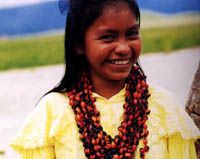 |
|
Indigenous Girl
|
TIPS AND SUGGESTIONS TO THE VISITORS OF THE PARK::
Don´t extract vegetal species, animals or minerals.
Lead only in the ways anticipated for it, thus will not destroy the fragile ecosystems of the park.
Don´t ignite radios or equipment of sound to excessive volume
Use aerosols that do not affect ozone layer and the biodegradable soaps.
Deposit the sweepings in the places destined to it.
It does not ignite bonfires.
|
Sources for the processing of this site:
|
||
|
Canaima: Un Majestuoso Reservorio de Recursos Naturales.
By Lisandro Martínez. Menssana - Un Espacio en el Web dedicado
al Naturismo: http://www.menssana.com.ve
|
||
NOTE OF THE WEBMASTER: The information and the photographies including in this site, have been obtained in pages of Internet that offer their content gratuitously. These paginas did not give legal warning to their visitors on the author right (copyright) who on them could have. If the author of the photographies that appear in this page wishes that they are retirements, please to communicate with us through the electronic mail and they will be retired immediately
